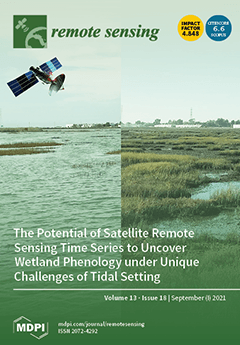Exposure to fine particulate matter (PM
) air pollution has been shown in numerous studies to be associated with detrimental health effects. However, the ability to conduct epidemiological assessments can be limited due to challenges in generating reliable PM
estimates, particularly
[...] Read more.
Exposure to fine particulate matter (PM
) air pollution has been shown in numerous studies to be associated with detrimental health effects. However, the ability to conduct epidemiological assessments can be limited due to challenges in generating reliable PM
estimates, particularly in parts of the world such as the Middle East where measurements are scarce and extreme meteorological events such as sandstorms are frequent. In order to supplement exposure modeling efforts under such conditions, satellite-retrieved aerosol optical depth (AOD) has proven to be useful due to its global coverage. By using AODs from the Multiangle Implementation of Atmospheric Correction (MAIAC) of the MODerate Resolution Imaging Spectroradiometer (MODIS) and the Multiangle Imaging Spectroradiometer (MISR) combined with meteorological and assimilated aerosol information from the Modern-Era Retrospective analysis for Research and Applications, Version 2 (MERRA-2), we constructed machine learning models to predict PM
in the area surrounding the Persian Gulf, including Kuwait, Bahrain, and the United Arab Emirates (U.A.E). Our models showed regional differences in predictive performance, with better results in the U.A.E. (median test
= 0.66) than Kuwait (median test
= 0.51). Variable importance also differed by region, where satellite-retrieved AOD variables were more important for predicting PM
in Kuwait than in the U.A.E. Divergent trends in the temporal and spatial autocorrelations of PM
and AOD in the two regions offered possible explanations for differences in predictive performance and variable importance. In a test of model transferability, we found that models trained in one region and applied to another did not predict PM
well, even if the transferred model had better performance. Overall the results of our study suggest that models developed over large geographic areas could generate PM
estimates with greater uncertainty than could be obtained by taking a regional modeling approach. Furthermore, development of methods to better incorporate spatial and temporal autocorrelations in machine learning models warrants further examination.
Full article





